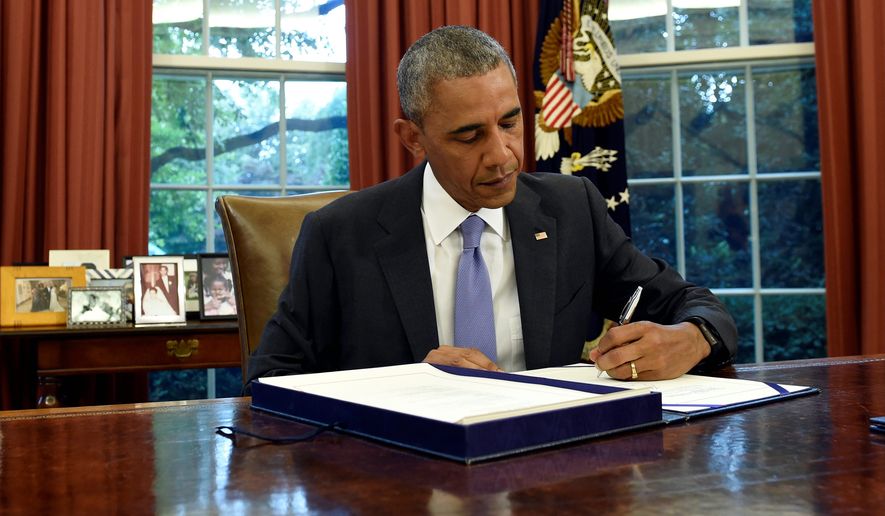Look out for the executive orders, the “midnight” regulations and, perhaps most controversially, the pardons.
As President Obama runs out the clock on his eight-year tenure, analysts say, he still has plenty of business left undone, and they expect him to follow the lead of other presidents and issue a series of rules, to add to his list of executive orders, to continue his record-setting pace of commutations and perhaps add a controversial pardon or two into the mix.
“I do think a pardon for Huma and Weiner might happen,” said Michael McKenna, a Republican lobbyist, referring to Huma Abedin and her estranged husband, Anthony D. Weiner, whose emails are being scoured by the FBI for wrongdoing.
Truly lame-duck presidents are freed from political concerns, don’t have to worry about other elections and can even help take political heat off their successor — or try to lock in their own policies that their successor might not fully support.
For Mr. Obama, who already has set records for the most expansive regulatory agenda in U.S. history, his final months offer a chance to pad his lead and plow new ground, particularly on energy and environmental issues.
Sam Batkins, director of regulatory policy at the American Action Forum, said five major rules — including renewable fuels and methane — are awaiting action.
PHOTOS: See Obama's biggest White House fails
“It’s easily in the billions of dollars,” he said.
Mr. Batkins said he is also watching for rules on vehicle-to-vehicle communications, which would govern the nascent field of smart cars, and for the administration to try to build on its extensive legacy on fuel efficiency, where Mr. Obama has done more than Presidents Bill Clinton and George W. Bush combined.
One major factor in the pace of lame-duck action is how certain a president is that someone who shares his values is succeeding him.
“What we’ve seen in the past is when the outgoing president is replaced by somebody from the opposition party, then in the waning months of their presidency there’s a burst of regulatory and rule-making activity,” said William G. Howell, a political scientist at the University of Chicago.
The White House Office of Management and Budget, which is the nerve center for executive actions, didn’t respond to a request for comment on the president’s plans.
But another fertile area for Mr. Obama could be executive orders, where he has been relatively restrained compared with his predecessors.
SEE ALSO: Top 10 Hillary Clinton scandals exposed by WikiLeaks
“Executive orders suit the needs of an outgoing president who wants to establish or change policy, or is striving to secure his legacy,” the Congressional Research Service said in a study of presidential transitions.
Mr. Bush issued 11 lame-duck executive orders, Mr. Clinton issued 22, President George H.W. Bush had 14 and President Reagan issued 12. President Carter set the modern marker with 36 in his final days in office — nearly a third of those relating to the hostage crisis in Iran that dominated his last year.
Mr. Obama’s tenure has had its ups and downs. When his party had total control of Congress, including a massive majority in the Senate, he won a series of victories such as the Affordable Care Act, which commonly became known as Obamacare, and the Dodd-Frank legislation, which rewrote rules for Wall Street.
But after Republicans took control of the House in early 2011, the president’s legislative dreams were thwarted and he turned his attention to flexing his executive powers. He picked a fight over recess appointments, which he eventually lost in a major Supreme Court case, and began a string of record-setting years of regulations as he tried to shape Obamacare and Dodd-Frank.
In 2015, after Republicans won control of the Senate, Mr. Obama gave up on working with Congress and vowed to double down on use of his unilateral powers, which he dubbed his “pen.”
Clyde Wayne Crews, vice president for policy at the Competitive Enterprise Institute, said this president may not even use the traditional methods of executive orders or regulations. During his time in office, Mr. Obama has expanded the use of other avenues of executive power, including memos and guidance from underlings.
“There are a lot more rules that get issued now by the federal government that don’t go through the standard notice and comment procedure,” Mr. Crews said. “They don’t need to write rules anymore. They’ve got things pretty much under control.”
Forgoing the official process doesn’t always work out, however.
One of Mr. Obama’s biggest moves, his 2014 attempt to grant a deportation amnesty to more than 4 million illegal immigrants, came not from an executive order or regulation but in a policy memo he directed be issued by Homeland Security Secretary Jeh Johnson. A federal district court put the amnesty on hold, ruling that Mr. Johnson should have gone through the regulatory process instead.
Later, a federal appeals court issued an even broader ruling finding that the amnesty violated immigration law. The Supreme Court upheld that decision on a tie 4-4 vote.
• Stephen Dinan can be reached at sdinan@washingtontimes.com.




Please read our comment policy before commenting.